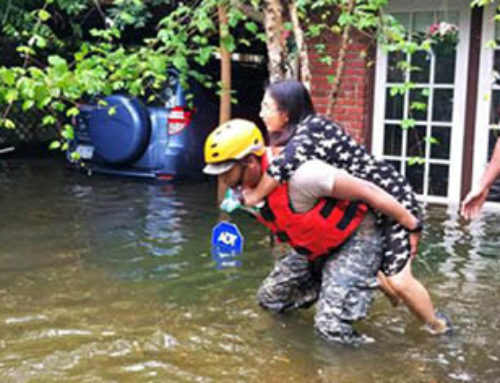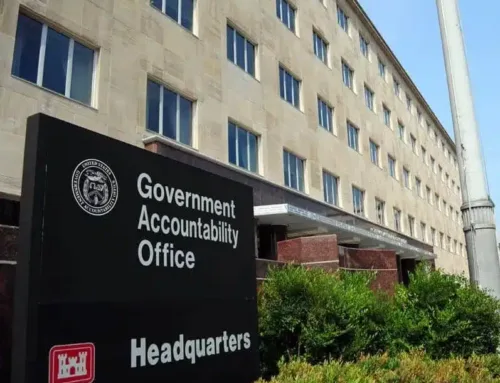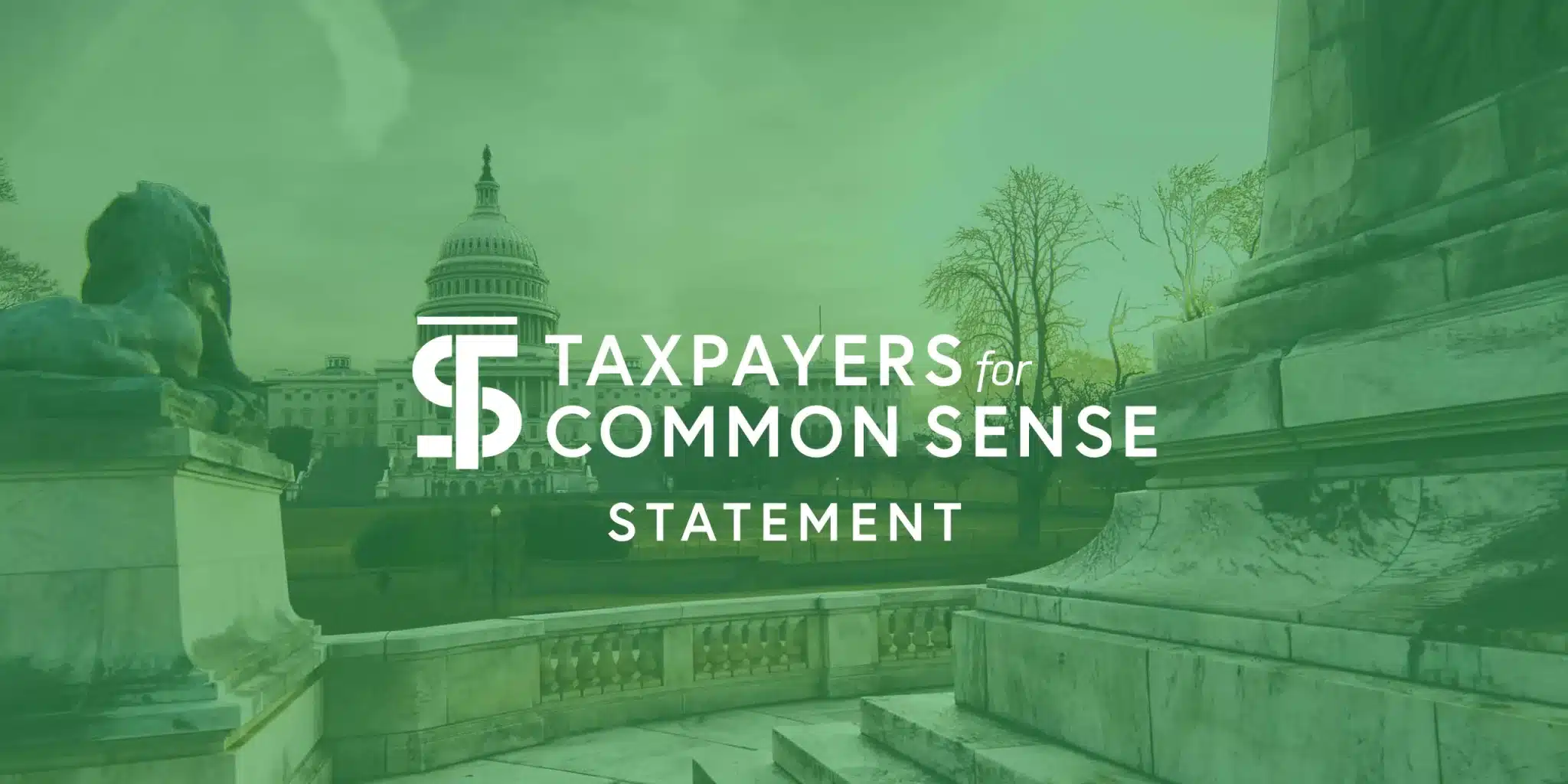When it comes to climate change you don’t need to be steeped in the science. What you really need to understand are the staggering financial costs. Costs that one way or another find their way back to all of us – the taxpayers. Join Steve Ellis and Josh Sewell for a readout on an important congressional hearing this week looking into housing resilience in the face of climate change. The National Flood Insurance Program and the Community Development Block Grant – Disaster Recovery program are critical, but costly tools to deal with the ever-deepening effects of climate change.
TRANSCRIPT:
Steve Ellis:
Welcome to all American taxpayers seeking common sense, you’ve made it to the right place. For over 25 years, TCS, that’s Taxpayers for Common Sense, has served as an independent, non-partisan budget watchdog group based in Washington, DC. We believe in fiscal policy for America that is based on facts. We believe in transparency and accountability because no matter where you are on the political spectrum, no one wants to see their tax dollars wasted. It’s May 6th, 2021, and guess what? Congress is again confronting the very real costs of climate change, right now in our everyday lives. Believe me, when it comes to climate change, you don’t need to be steeped in the science, what you really need to understand are the staggering financial costs. Costs that, one way or another, find their way back to all of us. The taxpayers.
All of this was top of mind for some members of Congress this week, as I participated as a witness in a congressional hearing, looking into housing resilience in the face of climate change. I testified, albeit remotely, before the house subcommittee on housing, community development, and insurance of the House Financial Services committee. And let me assure you, the costs of climate change are on the top of the mind for these policymakers. As they should be, because the National Flood Insurance Program, NFIP, and the Community Development Block Grant Disaster Recovery Program, C-D-B-G-D-R, are critical but costly tools to deal with this crisis.
And as I reminded the subcommittee members, while there are a little more than 5 million National Flood Insurance policies, there are well over a hundred million housing units in this country. To put the need for people to avail themselves to flood insurance into perspective, according to FEMA, after 2016’s extraordinarily heavy rainfall event in Baton Rouge, the average homeowner with flood insurance got $86,500 to rebuild their home. The average person without flood insurance got only $9,100 in individual disaster assistance. And as I pointed out at the time, $9,100 is not enough to rebuild your home or your life. To be sure, the challenges that both the NFIP and the CDBGDR program attempt to address would still exist absent climate change.
There would still be disasters, but climate change exacerbates those challenges and is sending the cost of taxpayers even higher. So on this episode of the podcast, we are going to keep flooding, disaster recovery, and the cost of climate change to taxpayers top of mind too. What are the key issues facing those lawmakers when it comes to the reauthorization of NFIP? And can CDBGDR bear up under the strain of increased disaster frequency without being statutorily authorized? Joining me to plumb the depths of this is the one and only Josh Sewell, TCS senior policy analyst. You’re going to have to work hard to weave agriculture into this one, my friend, but I know you can. Or more importantly, will.
Josh Sewell:
Challenge accepted.
Steve Ellis:
So what I’m going to do here, dear podcast listener, is to try to bring the hearing to you. But I’m going to streamline it so you don’t have to be there for more than two hours like I was. I’m bringing in Josh to help unpack some of the issues brought up in the hearing. Josh, is it true that FEMA is still using the same risk rating system that they first created 50 years ago?
Josh Sewell:
Well, pretty much. We’re in a much different world than in 1968. I mean, you weren’t even in the world in 1968 and you appear to be a hair’s breath from Medicare, which by the way, was also in its infancy in 1968. So just think about the technological changes. So the smartphone in your pocket, whether it’s an Apple or the better Android, it has more computing power than a room full of computers back in 1968. In fact, I think it took a whole room to make a computer in ’68, practically. Now, mapping has moved leaps and bounds. You have LIDAR, 3D mapping, these things called satellites. So these are all tools that are available and they’ve resulted in better risk modeling and future casting. So we know so much more than we did back in 1968. To their credit, FEMA is rolling out risk rating 2.0, which is supposed to tackle some of these issues.
Steve Ellis:
Well, there were satellites back in 1968, there’s this Sputnik and some other satellites that were up, but point taken, Josh. Very good point taken. And this risk rating 2.0 is, for a nerd like … Well, nerds like us, is exciting because I mean, they’ve basically taken data from public and private companies. They’ve taken data from other sources to try to have a better understanding of the risk that is being born by these various property owners. And so they recognize that, just because you happen to live on the same street, doesn’t mean that you have the same risk profile and that they can narrowly tailor it so that actually people are paying what their actual risk rate is.
And so, by their analysis, the vast majority of policy holders are going to see a rate reduction, and a handful will see increases, but that’s something that should be the case. You should be bearing your risk. One of the things that also came up at this hearing and I’ve kind of hit on this a little bit about the losses. What’s the deal with repetitive loss properties? Those that have flooded multiple times and still get multiple payments?
Josh Sewell:
50 years into this program, we have some very bad properties and severe repetitive loss properties. We’re talking about houses and other structures that have had a flood insurance claim from four separate flooding events or two major payments worth more than the property is valued. You’ve got to do something about these. And it depends on where you are and how you measure it, but these properties are actually the majority of the costs in the program. And so, again, what you’re having is a house or another structure that is at risk of flooding repeatedly. And that’s where you really need to make some of the easiest changes to cut some of these properties out of this program. Or the other thing you can do too, is in a repetitive loss property, if you want to rebuild, you have to rebuild it differently. You have to do something different because you are at risk.
Steve Ellis:
Ding, ding, ding, that’s exactly it Josh. And that’s what I sold the committee at the time too, is that we need to target our resources at these bad actor properties and make sure that we get those out of the system and a little bit of expenditure there is going to have big savings in the long run. So shifting to disaster response, what about building codes? What role does those play in these issues, Josh?
Josh Sewell:
Well, common sense, strict building codes are key. And I’m not advocating that the federal government adopts a national standard and imposes that on states. But there are strings that need to be attached to federal aid. What we’re basically asking is that, again, you’ve had a disaster, you weren’t prepared, you were not protected, you have to do something different. So take some sense steps to reduce your risk. Federal money isn’t free and you guys can do things better.
Steve Ellis:
Yeah and it’s really about what these states and localities are doing and are they stepping up to the plate and are they actually doing their share, that then allows taxpayers to feel comfortable that you are not just throwing good money after bad. And that it actually is going to have an effect. So sticking with disaster response, we’ve basically got an alphabet soup of federal agencies involved in disaster response. There’s the Corps of Engineers, it’s call them USACE, you have FEMA, HUD, NRCS … Oh, there’s your opportunity, Josh. Shouldn’t there be a cross-cut disaster budget so we can see where the money is going? I have to admit, this question from Congressman Posey of Florida was music to my ears.
Josh Sewell:
Well, I can see why. We love budget data and transparency. A cross-cut disaster budget is vitally important. We need agencies to talk to each other. That’s one of the biggest lessons we’ve learned in agriculture policy is that you have so many agencies working on different things, so they don’t speak to each other, and you can’t actually solve problems. And we also need policy to be based on reality. Any time you’re talking about disaster policy, especially, you can’t filibuster a flood. I mean the water’s coming, the disaster is happening, we have to have some reality in this. And disaster policy is personal to all of us. What we have to do is we want to save money, but we also want to stop trauma, and importantly, we want to save lives.
Steve Ellis:
So Josh, I’m surprised you didn’t take the bait. NRCS is the National Resources Conservation Service, which is an arm of the Department of Agriculture. But maybe you will work it in later in the podcast. We’ll see. So Josh, the draft legislation caps NFIP rate increases at 9%. Congressman Steil from Wisconsin points out that his constituents in Racine, Kenosha, Janesville, could be subsidizing second homes. Fancy pants homes, he called them, on the coast. So what about that?
Josh Sewell:
Well the 9% cap halves the previous amount. This isn’t doing people favors. It discourages mitigation. Those folks are still at risk. Cutting a cost doesn’t make you safer. So also the Congressman is right about cross subsidies. According to the GAO, the Government Accountability Office, 78% of subsidized properties are in counties with the highest home values. And so that’s the top 30% of values, but only 5% are in counties in the bottom 50% of home values. So we’re subsidizing expensive properties more so than we’re assisting the impoverished. That is inequitable and unfair.
Steve Ellis:
Well we love us some GAO here at Budget Watchdog All Federal, so thank you for that. And more on the private market, Josh, one of the things that was brought up at the hearing was the moral hazard. By shifting so much of the burden under the federal government, that the numbers that were cited were, after Hurricane Diane in 1955, about 5% of the cost was borne by the federal government. After Hurricane Katrina in 2005, about 50% of the cost was borne by the federal government. But then after Hurricane Sandy, or Superstorm Sandy, in reality, it wasn’t hurricane when it made landfall. In 2012, 77% of the burden was on the federal government. So you could clearly see a trend here that more of the cost is being borne by the federal government, which obviously means that less of the cost is being borne by states and localities and individuals. So what is the problem with Uncle Sam picking up so much of the tab?
Josh Sewell:
Well, part of the cost issue is that, in large part, because of climate change we have more severe weather, we have more severe events, and we also have more development, oftentimes in the flood plain or on the coast where you’re more vulnerable. But also everybody has to have skin in the game. So increasingly, things that used to be an inconvenience are being reclassified as a disaster. And that’s because you’re essentially getting free money from the federal government. So a lot of these reforms are about better preparing. So we support a sliding scale of disaster assistance. There are some communities that need help to help themselves.
They are vulnerable and they can’t do it without federal assistance, but you need to invest more resources, time, planning, and money as a community in order to get that assistance. Again, we’re not going to go and dictate to everybody exactly what to do, but you have to invest some of your own resources. And those communities that do will get more assistance. Again, strings are attached to disaster aid and we can make the investments. But if you, as community invest resources, time, planning, and at times money, then you can get more assistance.
Steve Ellis:
Help us help you, show that you’re ready to react. Sadly, so many of these disasters are predictable. It’s not like we didn’t know that a storm was coming. It’s not like Harvey hit Houston and they’d never had Rita years before. So they do recognize these are issues and that they should be ready to respond to those.
Josh Sewell:
I don’t want to undersell how difficult it is to plan for a disaster. To budget for a disaster is tough because if you set aside funds, it’s always going to be a temptation to take those funds if you don’t have the disaster. And also there’s the temptation to have disaster creep, where you have this money so what used to just take it on the chin, now you want to tap your rainy day fund. But a lot of this planning that we’re talking about, isn’t always about putting money aside and not using it. It’s about making an investment now that’s going to have savings later.
So you build your houses higher, you do other standards to make your structures and your infrastructure less vulnerable to being washed away when that flood does come, and you don’t have to rebuild it later. So it’s a little bit of money upfront for a lot of savings later. And so it’s hard, because you see the costs now and you don’t necessarily see the savings, but that’s the kind of planning we need to do. And we need to reward communities that make that kind of planning, and make those tough choices now, and don’t come down later and seek a bailout.
Steve Ellis:
Great point, Josh, and something that came up at the hearing. And I think it’s critical, it’s tough, it’s difficult, but you get elected for a reason and you’re responsible to your constituents and you need to be making these tougher decisions and coming up with a plan for how you’re going to respond to these tragedies. Because they’re an opportunity, a tragic opportunity, but an opportunity nonetheless, to remake yourself in a less vulnerable way in the future. So on the topic of flood insurance, Josh, everybody knows that when you get your insurance and you get an accident in a car, you basically have your rates go up because they do the actuarial models and they figure out that you’re more likely to have another accident because you already had one. On flood insurance, is it actuarily sound? I mean, are they charging premiums that are going to recover the backend cost to taxpayers?
Josh Sewell:
Absolutely not. About 25% of properties in the program are subsidized. And some of those steeply. Taxpayers have been on the hook for the majority of the cost of the program for quite some time. And one of the big problems in the flood insurance program is grandfathering. So essentially, we talked about 50 years of experience, 50 years of technological changes, and 50 years of development that has changed hydrology and has changed the flood plain in many of these places. However, the rate structure is still based on some of that old, old data.
And so one of the things that we saw at the hearing, Congressman Van Taylor, who asked the question, noted that this was a disservice to the rate payers. Having grandfathering hides risks from people who are at risk. We need risk-based rates so people know what they’re actually facing, even if you have premium subsidies to help them, they at least to know their actual risk. Because at some point, taxpayers are going to get tired of bailing and NFIP out year year, when we could be investing our money somewhere else.
Steve Ellis:
NFIP has borrowed nearly $40 billion from taxpayers since 2005. But thankfully there are some reforms and we’re having some impact. They’ve now purchased re-insurance, which is basically insurance for insurance companies, and we’re able to lay off some of that cost onto reinsurance companies instead of having it hit the taxpayers. So let me get you out of here on this, at the top of the podcast, I mentioned CDBGDR, Community Development Block Grant Disaster Recovery. What is this thing and what are the issues with it?
Josh Sewell:
Well, I think part of it, I think you just like saying the acronym pretty fast. But anyway, the Community Development Block Grant Program is a housing and urban development program targeting lower income communities. Now after disasters, there’s a separate part called CDBG Disaster Recovery Program that’s actually separate from the overall program. Now this has stood up after every single disaster, practically. It’s not statutorily authorized. It was created after Hurricane Andrew and Iniki and Omar in 1992. And since then, $90 billion has been appropriated to it. The challenge is that, because it’s not permanently authorized and you have to redo the program, essentially, after every disaster if you want to have it, is that communities, bureaucrats and others are not familiar with the rules of the program. So you can’t really use it as a planning tool because you have to relearn the program and it may change, at times radically, based on the disaster.
So it doesn’t have the stability and predictability that you need in order to really be able to use this program, to not just recover, but make yourself more resilient to a future disaster. And it really needs Congress’s direction. And this is where Congress has to step in and say, “We’re not going to do this, we’re just going to make some tough choices. We’re going to figure out how to pay for it. We’re going to do some planning and we’re going to set this up,” because we know we’re going to do it. So let’s do it right now. Not at the heat of the moment, moments after a disaster.
Steve Ellis:
And Josh, there was bipartisan agreement that it needed to get statutorily authorized, and actually a bill to do that passed last Congress and the House and just didn’t go anywhere in the Senate. Where they often say, that’s where good ideas go to die, is in the Senate. But anyway, I think that the other thing, and just to underscore your point, if you think about it, that the CDBGDR run by the Bush administration after Hurricane Katrina, is going to be a lot different than the CDBGDR program run by the Obama administration after Superstorm Sandy. Which is different than what the CDBGDR program was going to be run by the Trump administration after Harvey Irma and Maria. And so Congress needs to step in and say, “Here’s some basic standards, here’s some triggers, here are some lessons learned.”
I mean, that’s one of the things too that, I think, is really important is that we have a tragic aviation disaster. There’s an airplane crash. We have the National Transportation Board go and investigate it and figure out what is the cause and what are the reasons. We have spent tens of billions of dollars on disasters and we don’t figure out what are the lessons learned. What should we do that we can apply to a future disaster that we can make it so that we can respond faster, better, and more effectively.
Josh Sewell:
Disasters aren’t partisan. And so disaster response and disaster planning absolutely can’t be either. This is about saving taxpayer dollars, saving people, and saving lives. I mean, it simply is.
Steve Ellis:
And that this is what government’s responsibility is, is to protect their taxpayers. I mean, that’s the fundamental organizing role of government is to protect the people that formed them. Going back to something that you’d said earlier, Josh, we incentivize, we actually provide incentives for development in high-risk areas. And that’s what flood insurance has done, to some extent, it is made it safe to build in harms way. At least financially safe for the homeowner to build in harm’s way, and rebuild in harm’s way, and we keep paying them again and again and again. And it has to stop. And so I think these are areas that Congress has to tackle. And nobody wants to see their rates go up, it’s not politically popular, it’s not really going to win you votes, but you ran for office and you’re in the big chair and you need to be responsible to taxpayers.
You swear an oath on the constitution to everybody, not just to your particular constituency, and so we really do need to reign in some of these perverse incentives. And then I also think that it’s really key to point out, and you mentioned this when you were explaining CDBG, is that the CDBGDR is really pointed at lower income communities. And we know that climate change and disaster disproportionately affects poor and minority communities. And they, in some cases, have been forced to build in harm’s way or are economically only able to build in harm’s way because of home prices. And these are the people who are the less able to mitigate and adapt. Not only that, they probably don’t have the savings that a lot of other people may have to rebuild or to withstand a disaster. So not only their home may be destroyed, but their car, their means to get to work, or even their place of business maybe destroyed as well.
And these are all things that Congress needs to tackle and needs to address head on. And sometimes it seems to be dropping the ball on these really important issues that aren’t exactly the big, sexy issue about climate change, but are really the hard, nuts and bolts issues that affect people across this country. Whether it’s wildfire or flood, like we’ve been talking about, or windstorms, derechos. There’s all sorts of hazards out there that have to be addressed and tapped. So there you have it listeners, flood insurance, disaster recovery spending, and the extreme financial exposure these bring to taxpayers. Thanks for listening to Budget Watchdog AF, subscribe and share and call your mother. It’s Mother’s Day this weekend, dammit. Until next time, the team at Taxpayers for Common Sense will remain laser focused on reading the bills, highlighting wasteful programs that poorly spend our money, and shift long-term risk to taxpayers.










Get Social